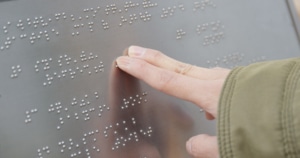Your Guide to the Americans with Disabilities Act – Accessibility Guidelines
If you own commercial property or certain residential buildings in Florida, you should be aware of the “Americans with Disabilities Act” accessibility guidelines. The US federal law requires owners of such properties to make reasonable accommodations for people with disabilities. These guidelines help these property owners make sure they’re meeting expectations.
Whether you’re buying or selling the property, clearly understanding the accessibility guidelines is important.
A Breakdown of the Guidelines
The accessibility guidelines are set forth by the US Department of Justice in the Americans with Disabilities Act, known as the ADA. These standards exist to ensure that people with disabilities have an equal opportunity to enjoy all aspects of life, including access to public buildings and accommodations.
You can find the most up-to-date standards on their website here.
There are three main sections of the accessibility guidelines:
- new construction
- alterations
- accessibility in existing buildings
“New construction” refers to any building that is newly built or any addition made to an existing building. All new construction must be completed in compliance with the current accessibility guidelines and designed with accessibility in mind.
“Alterations” refer to any changes to an existing building that affect accessibility. This could include changes like
- widening doorways,
- installing ramps
- adding an elevator
If you do updates of property the ADA guidelines apply to, these updates must comply with respective regulations. This is especially the case if you’re planning on using a property/home of yours
- for rental purposes
- listing an Airbnb
- or vacation home, and so on.
“Accessibility in existing buildings” covers all buildings that were built before the ADA was enacted in 1990. The guidelines apply to any renovations or alterations to these older buildings.
Basically, if you have a property and you’re either constructing it or doing work to it, then you need to make sure your plans and actual work meet or exceed the current ADA guidelines at the time of the work.
Each section has different requirements, but some commonalities include features like:
- wheelchair-accessible entrances
- wheelchair-accessible exits
- and wheelchair-accessible restrooms
- Braille signage
- adequate lighting
Ensuring Your Property Meets the Accessibility Guidelines
You can do a few things to ensure your home is accessible and compliant with the ADA guidelines.
One of the most important things you can do is have a clear understanding of the guidelines themselves. Familiarize yourself with the requirements so that you can make informed decisions about potentially necessary changes.
If you’re making any alterations or renovations to your home, make sure to factor in accessibility.
And finally, if you’re selling your property, it’s important to mention existing accessibility features or modifications. This will help set expectations for potential buyers and avoid surprises down the road.
The accessibility guidelines are an important part of the ADA, and they play a vital role in ensuring people with disabilities have equal access to all aspects of life. As a property owner in Florida, it’s important to be aware of these guidelines and take steps to ensure that (if applicable) your property is compliant.
If you have any questions or need help getting your home up to accessibility standards, don’t hesitate to reach out and contact us here at Divinity Home Inspections. We’re always happy to help you make sure your property is up to standard and meets all the required expectations.








Leave a Reply
Want to join the discussion?Feel free to contribute!